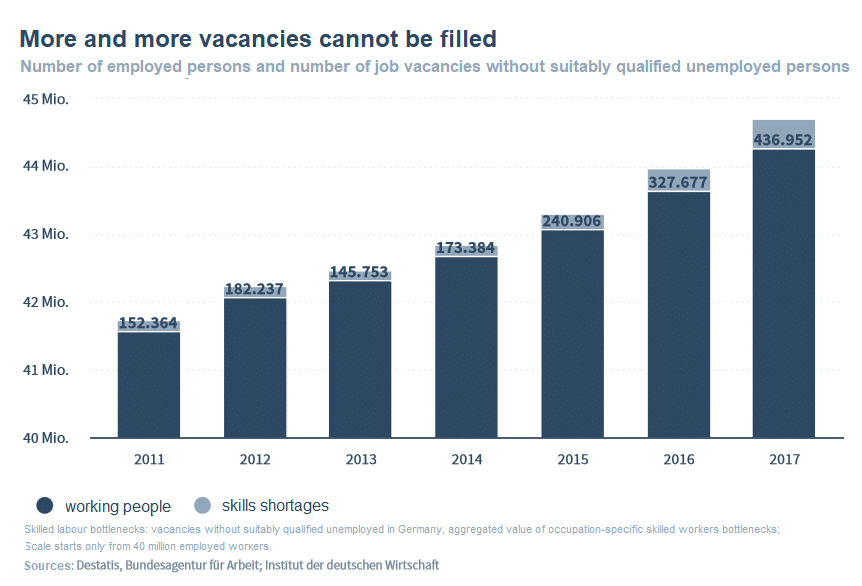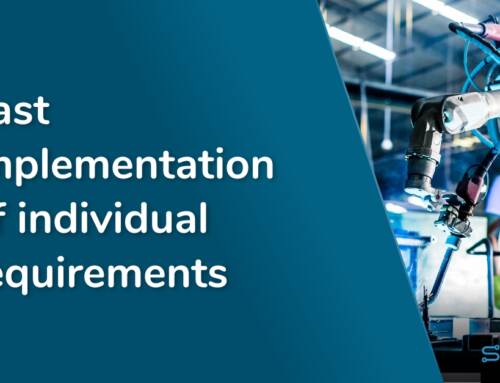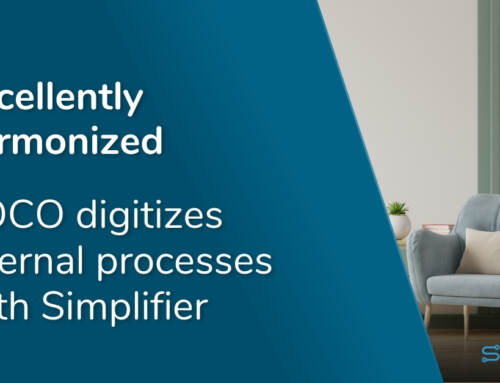…between the IT and the specialty departments
“What belongs together, grows together…” This quote by Willy Brandt is still valid today – especially in many german companies. Or is it?
Due to the increasing demand for applications, specialty departments often start creating – or have external experts do that – their own applications without the actual participation of the respective IT department, if the latter cannot help due to a lack of capacity.
Does this drive IT and the specialty departments apart? Or is there an alternative way to bring the two closer together again?
The problem is just too well-known: There are currently far too few skilled workers on the german market. The chart below (taken from the IW Short Report 27/2018.) displays this clearly.
This trend is particularly rampant in the IT sector.
So much so, it leads to growth in Germany being hampered increasingly (german).
Many board members are starting to ask questions like:
- Can we create and implement a digitization strategy without specialists?
The answer: It depends on… but rather difficult! - Can we advance high-quality software development without IT?
The answer: Very difficult! - Can and should specialty departments create their own applications in the future?
The answer: Virtually impossible!
What would the answers look like if one were not explicitly dependent on specialized experts for these processes?
Making application creation possible for (almost) all
This situation brings to light an interesting development: Since specialty departments – as mentioned earlier -, need more and more applications, but cannot wait for the understaffed IT to develop them, the “affected persons” are increasingly taking care of the problem themselves.
They do so with low code platforms.
With a graphical user interface and drag & drop functions, these platforms make it possible to create applications with little program code. So, you don’t have to be an expert. (Almost) Anyone can learn that!
(More information about their functions and advantages can be found here!)
Bridge over troubled water
The great thing about low code platforms is that they advance collaboration within the company. They ensure a smoother application creation process and lead safely over troubled water (Simon and Garfunkel say hello!).
So far, the implementation of applications has often been too time-consuming. Due to a lack of resources, the result was often qualitatively unsatisfactory for the users because desired functions were missing or quality tests were not carried out thoroughly enough.
The frequently voiced fear that low code platforms would lead to “shadow” IT and loss of control is easily refuted:
Citizen developers
At this point, the so-called “Citizen Developers” come into play. They are technically experienced employees with a little IT background (web development, etc.) who can build their own applications – sometimes after appropriate training. (At Siemens Process Industries and Drives Division in Nuremberg, the selected employees were able to create their first smaller applications with our low code platform Simplifier after just one day. Read more here!).
They function as a kind of “extended IT workbench”, with the low code platform forming the bridge between the departments and IT.
To ensure that production on the workbench follows the rules given by IT, however, IT must continue to provide support. It must “control” the applications and integrate them into the company’s official system landscape. Also, IT provides the platforms.
All this entails a very important advantage: employees who have creative ideas for improving the workflow in their departments can also be integrated (german). On the other hand, the IT professionals have the overview without having to worry about the details. In addition, adaptations can be made at any time without great efforts on the part of the IT department.
Conclusion
IT and specialty departments need to be interdependent if application development is to work well in times of scarce developer resources.
Business departments can help themselves. IT helps them to help themselves. Low-code platforms thus bring both sides together through a bridge function.
Excellent results can only be achieved if both sides work together.
Or, to put it in the words of US President Abraham Lincoln: “A house divided against itself cannot stand”.
If you would like to know more about low code platforms, please contact us!






